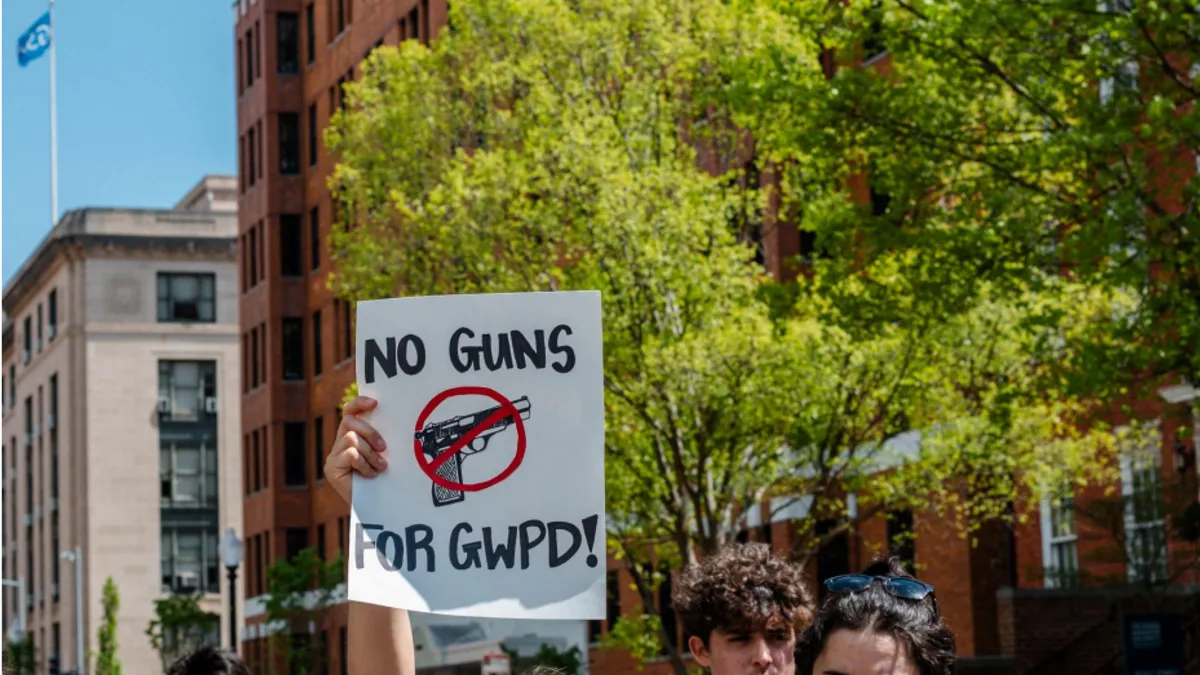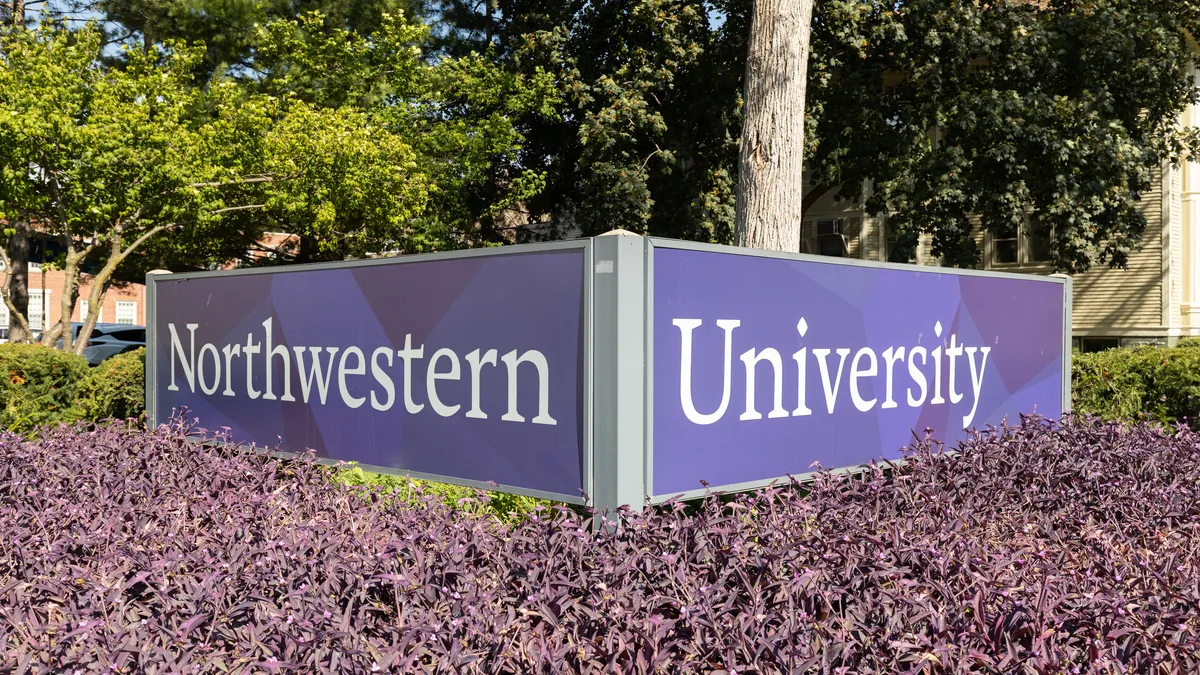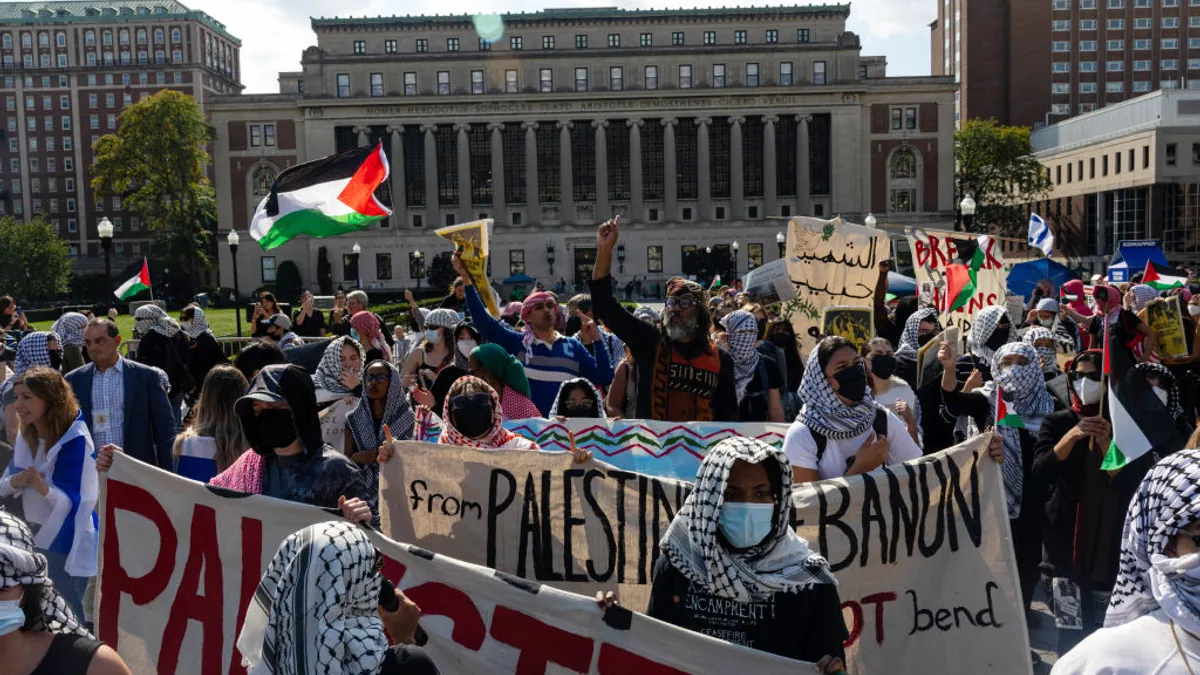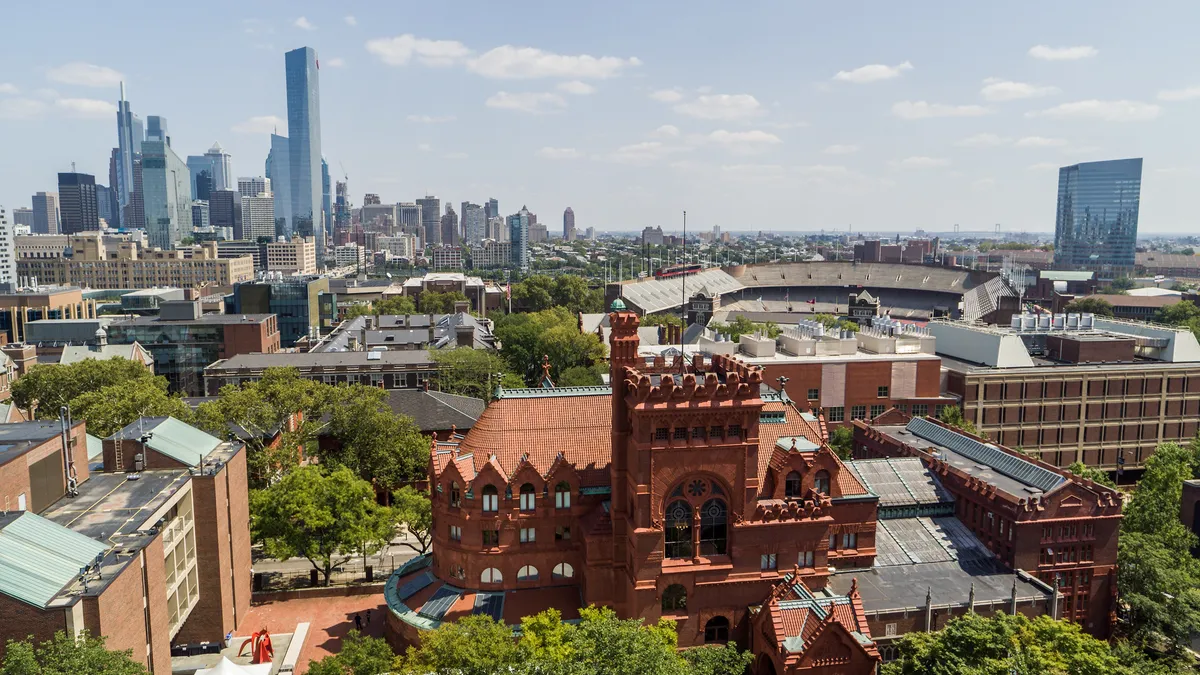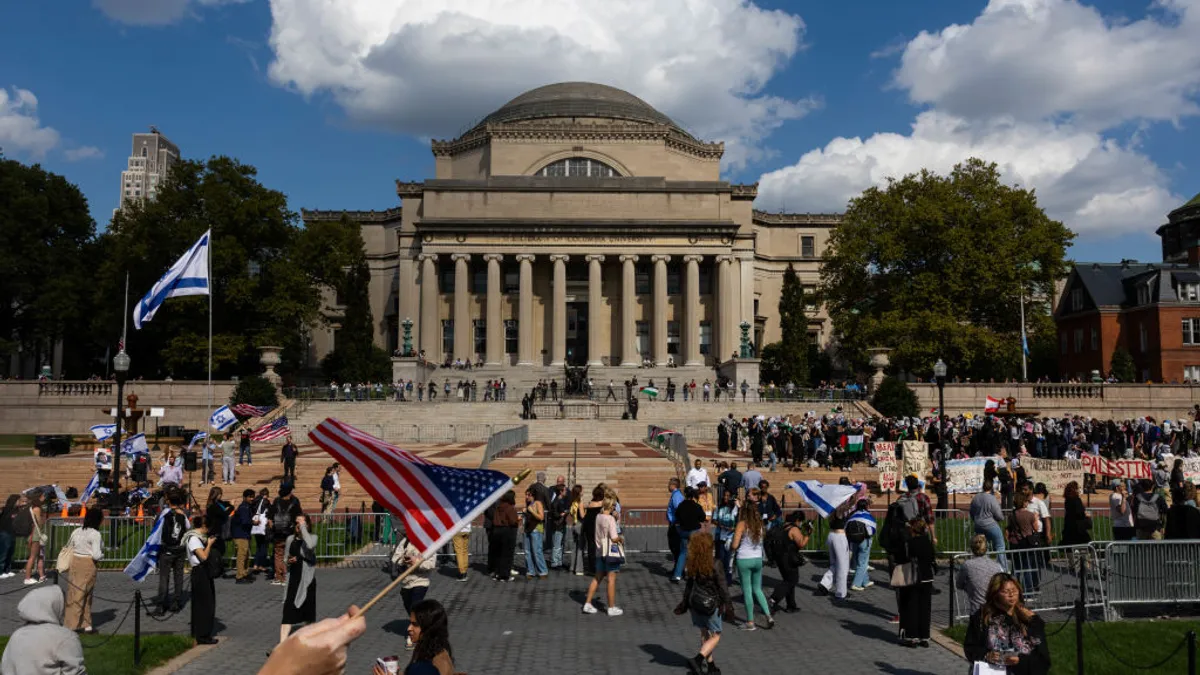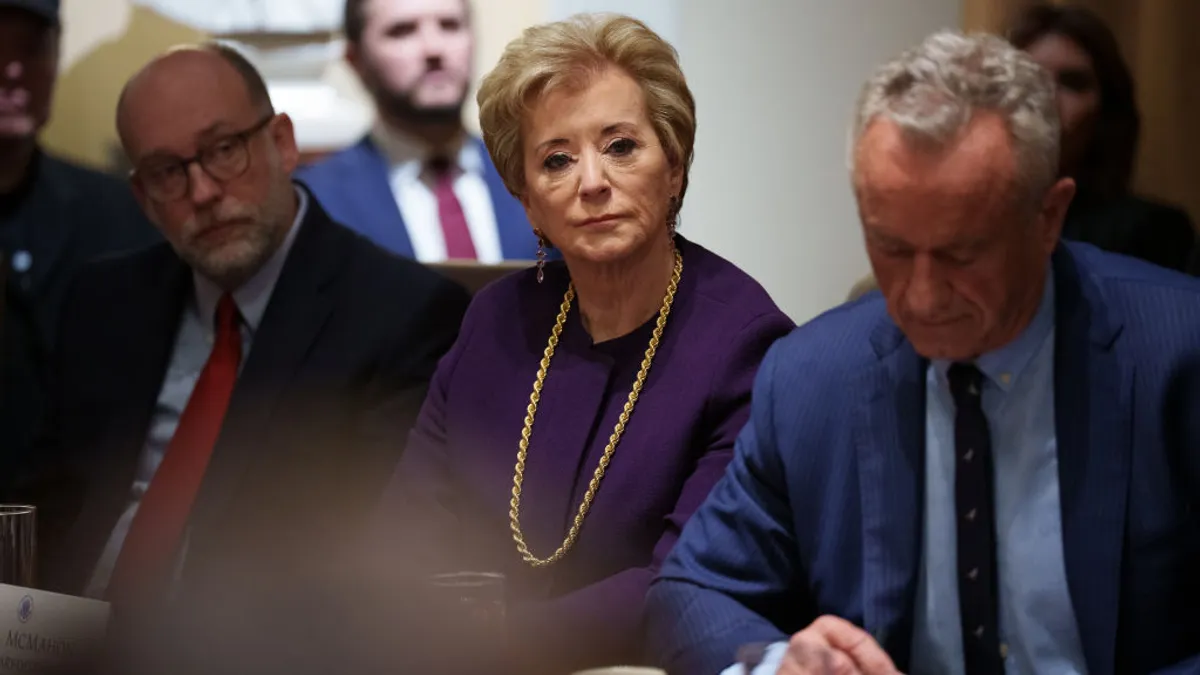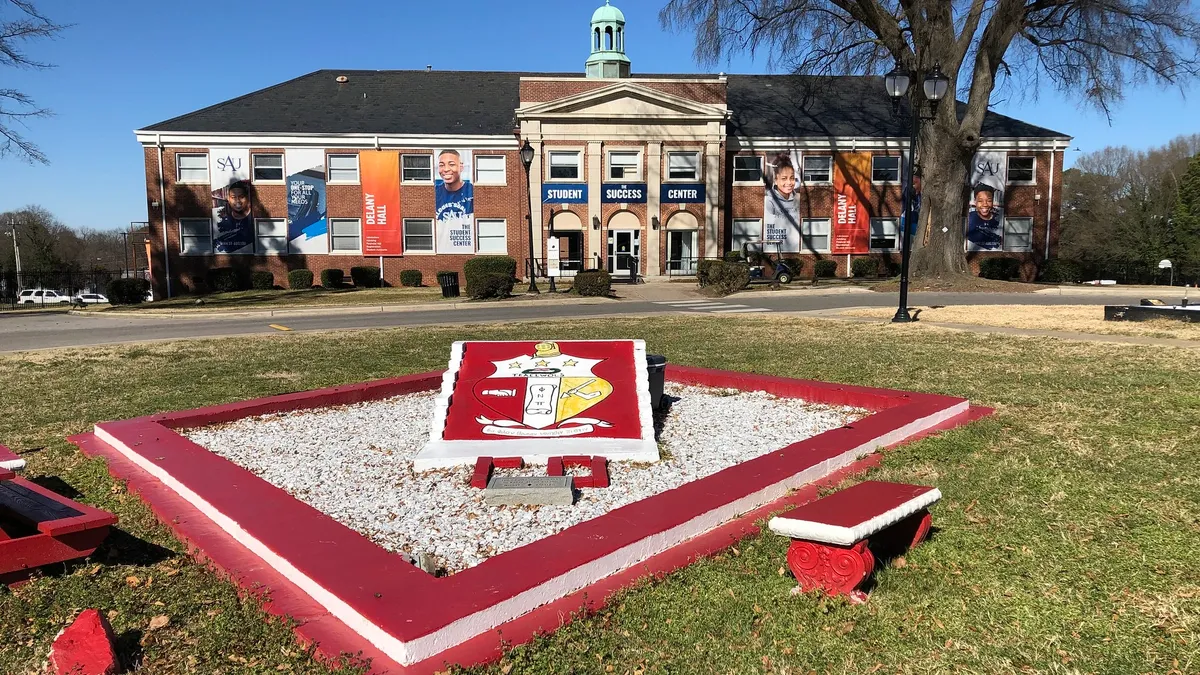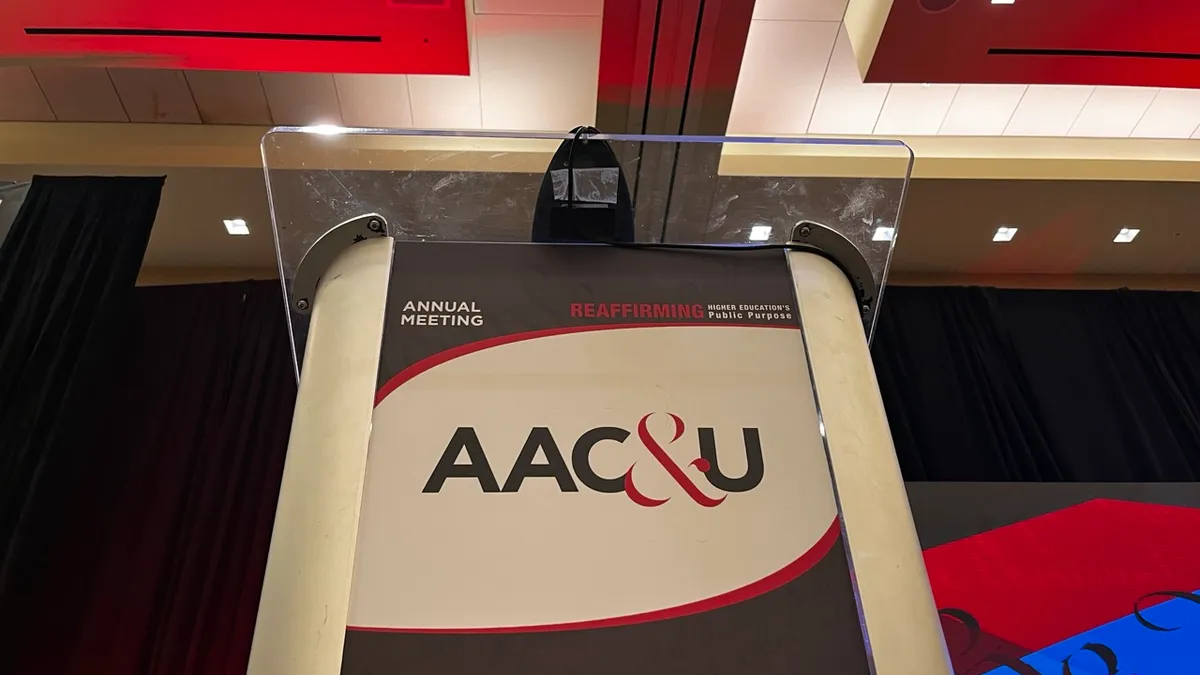George Washington University students haven’t always had the best rapport with their campus police force.
In early 2020, a student accused campus law enforcement of pushing her down a set of stairs at the former university president’s on-campus home, where she was protesting. Just a few months later, the Black Student Union publicly demanded the George Washington Police Department enforce a zero-tolerance policy against officers who act on racial biases. The union said at the time it was “tired of every Black student being able to recall a negative or frightful encounter they’ve had with GWPD.”
Now, a proposal to arm a contingent of the campus officers threatens to further fray the student-police relationship. Mark Wrighton, interim university president, told the campus last month that trustees directed the administration to craft such a plan. Wrighton said though officials “are not aware of any heightened threat to our university,” they had grown concerned with recent shootings at Michigan State University, the University of Virginia and an elementary school in Nashville, Tennessee.
Students, and later faculty, balked at the prospect, arguing that arming campus officers — who they say mostly handle incidents like intoxicated minors and other low-level crime — wouldn’t fortify campus safety.
Disputes over arming university police aren't contained to just George Washington University, in Washington, D.C. College students and administrators nationwide have engaged in intense tugs-of-war over how much to scale up police presence and power on campuses.
GWU administrators say they’re paying close attention to student and employee opinion.
“The university values all of our stakeholders’ perspectives,” GWU spokesperson Julia Metjian said in an emailed statement. “We have launched an effort to gain community input on the implementation of our reimagined public safety plan. Members of our community are expressing support, concerns, and ideas for implementation in a variety of ways. We will continue to provide opportunities for additional engagement as our implementation plans take shape.”
What’s going on GWU?
Days after the interim president announced the trustees’ wishes, more than 100 student organizers and other demonstrators who opposed the plan marched through the private nonprofit’s campus and gathered outside Wrighton’s home, which is just down the street from the White House.
Leaders from student organizations like the Black advocacy group GW Black Defiance spoke, referencing police shootings on or near colleges. More than 20 student groups signed onto a statement demanding officials reverse their decision.
Even students uninvolved in the demonstrations aren’t for arming security.
In an interview on the campus Thursday, first-year student Charlotte Davie questioned the need for armed campus officers when D.C. Metropolitan Police are available.
Davie said the administrators didn’t appear to be listening to student concerns, citing their plans to move forward with the proposal even while they say they are accepting campus feedback.
Another first-year student, Jonny Thibodeau, said the plan doesn’t appear to be financially prudent.
“Maybe it’ll be necessary at some point in the future, but not now,” Thibodeau said.
Administration hasn’t disclosed the cost of equipping officers. Metjian did not respond to a question about the price or how much GWU spends annually on public safety. Few details of the plan have emerged, though the university’s student newspaper, The GW Hatchet, reported the institution intends to arm about 20 of the roughly 50 officers with 9 mm handguns.
Daniel Turner, who graduated from GWU last year and now works with the campus ministry, said given the student blowback, proceeding with the plan isn’t worth the trouble. Turner as a student had poor experiences with campus police, saying officers aren’t always great at interacting with students.
He recalled a time when one of his professors reserved a library room for his class, but in a mixup, a student organization tried to book the same space. When the two sides couldn’t resolve it, the student group called police, who then berated Turner’s professor, he said.
Faculty have also come out strongly against armed law enforcement. More than 200 faculty members signed a statement accusing administration of rushing its plan and flouting shared governance in the process.
This “makes community members feel as if the University leadership and the Board of Trustees lack respect for faculty and student views or judgments,” the statement said. “This decision is also dubious during the short remaining term of an interim President who is about to leave, and given the lack of transparency about the financial costs.”
The faculty noted that Georgetown, American, Trinity Washington and Gallaudet universities, all private nonprofit institutions in the nation’s capital, do not arm their officers.
Howard University, a prominent private historically Black institution in the district, however, does have armed law enforcement, as does the University of the District of Columbia, a public institution.
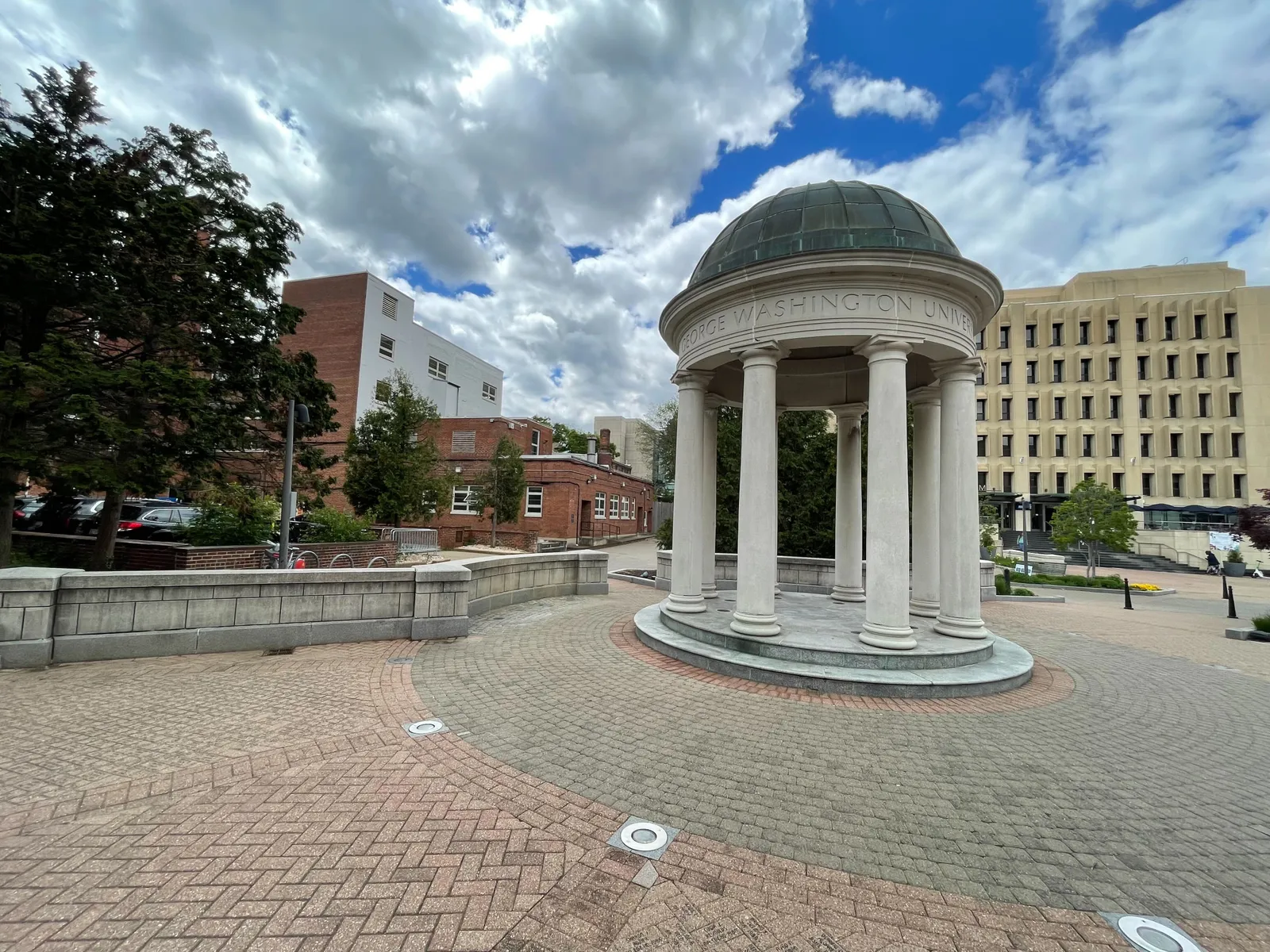
GWU is one of the most prominent D.C. colleges, enrolling more than 26,000 undergraduate and graduate students and has two other campuses, one in Northern Virginia and a second Northwest D.C. location.
“It is bound to change the feel of our campus,” the GWU faculty said in their statement. “This is not the student experience we should be striving for at this university.”
Meanwhile, the university argues its officers know the campus geography best and are key in responding to emergencies, “especially during times of increased calls for service requiring the attention of our local partner agencies elsewhere in the District,” Wrighton said. “When weapons are involved, minutes matter.”
Policing debates
Student mistrust over campus policing can run deep, as these issues often involve concerns over racial bias.
Examples of fatal police shootings involving colleges extend back decades. In 1970, what was then Jackson State College, a Mississippi HBCU, saw national headlines when city and state police fatally shot two students and injured a dozen more in response to a protest over racial injustice.
This was just days after the National Guard had killed four students at Kent State University, in Ohio, during a protest against the Vietnam War.
Both events profoundly affected the U.S., as they occurred at a time of peak political and social tensions surrounding the war and the Civil Rights Movement, and exemplified growing disillusionment with government authority.
More recently, in 2015, a University of Cincinnati police officer fatally shot an unarmed Black man, Samuel DuBose, during a traffic stop, sparking national outrage.
And a years-long saga over campus policing continues to unfold at Johns Hopkins University, another prestigious private nonprofit institution in the heart of Baltimore.
Beginning in 2018, university leaders began lobbying lawmakers for authorization to institute a private police force amid a surge in local crime.
The legislature gave approval, but ramping up police resources proved a tough sell in a city notorious for the 2015 killing of Freddie Gray, a Black man who suffered a spinal injury in Baltimore City Police custody. His death spurred riots in the city, and eventually, an exhaustive federal court order intended to curtail further prejudicial policing.
Johns Hopkins students also railed against campus security officers, alleging some of them shared racist posts online. Student activists even occupied an administrative building for more than a month in 2019, though this did not halt the plans.
What did put them on pause for two years was the death of George Floyd, another Black man, in 2020. Floyd’s murder by Minneapolis police activated a racial reckoning, causing institutions like colleges to take hard looks at potentially racist structures and try to fix them.
Yet in the nearly three years since Floyd’s killing, other matters have taken precedent in the nation’s consciousness, said Charles Davis III, a University of Michigan education professor who studies racism and oppression.
Diversity initiatives that sprung up in the corporate world in the wake of Floyd’s murder have started to recede. In the higher ed world, colleges that three years ago disempowered or severed ties with police have since started to reintegrate them.
Portland State University disarmed its security in 2020 in part because two years prior, a campus officer fatally shot a Black man just outside the public institution’s boundaries.
But last month, Portland State President Stephen Percy said it will reequip its officers, citing an influx of weapons on and near campus and officers receiving “limited assistance” from the Portland Police Bureau.
The University of Minnesota distanced itself from Minneapolis police in 2020 after one of its officers murdered Floyd. The university stopped relying on off-duty Minneapolis police for security and special services, like K-9 bomb units, at large events such as concerts or athletics.
However, last year, the university’s outgoing president, Joan Gabel, said it will start to phase in the use of Minneapolis police at these big events once again.
The day-to-day relationship between the University of Minnesota Police Department, or UMPD, and Minneapolis police, never changed, university spokesperson Jake Ricker said in an email Thursday.
“UMPD and MPD continued (and continue) to communicate about day-to-day public safety efforts and work together in the neighborhoods near our Twin Cities campus,” Ricker said.
Research doesn’t support armed officers
Little research exists on whether arming police reduces gun violence on college campuses. However, multiple studies have shown doing so did not mitigate mass shootings in K-12 schools — Davis said that the results of this type of research can be extrapolated to colleges.
The GWU faculty who urged the administration to abandon its plan referenced this research in their message. They pointed to a 2021 study in the peer-reviewed journal JAMA Network Open that looked at K-12 mass shootings from 1980 to 2019 and found “no association between having an armed officer and deterrence of violence in these cases.”
Despite this, many colleges still lean on armed security. A Bureau of Justice Statistics report from 2015, the most recently available, found that 75% of four-year colleges enrolling 2,500 students or more armed their law enforcement in the 2011-12 academic year.
This was up from the bureau’s last study, which found 68% of those institutions used armed security in 2004-05.
Colleges have also come under fire for participating in the U.S. Department of Defense’s 1033 program, which Congress authorized in the 1990s. It allows the federal government to pass down military resources — including high-grade weapons — to local law enforcement, including on college campuses.
Why do colleges still pursue armed security? According to Davis, they may want to portray themselves in a particular way.
Consider when prospective students and families go on tours, guides often tout the number of campus police and other safety measures, he said.
“We think of police serving law and order, the protection of White institutions,” Davis said. “This is being communicated to certain constituencies, like a potential donor base, for instance.”
Davis urged institutions to rethink their budget priorities. Colleges pouring money into police could redirect those funds to mental health counseling or food pantries, which would better campus environments and potentially remove the need for more law enforcement, he said.
“This money would create safer conditions, more than police,” Davis said.



